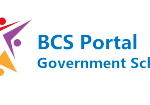Panchakarma Treatment:- In order to assist rid the body of accumulated toxins and restore health, Panchakarma is an Ayurvedic therapy that consists of five karmas. After assessing your physical and psychological details, your doctor is the best person to choose a cleansing method that’s right for you. Toxins are removed through multiple processes during the cleaning process.
About Panchakarma Treatment
The purpose of purifying and healing the body, mind and spirit is called panchakarma. According to Ayurvedic teachings, each person is a unique entity embodied in the five elements of earth, fire, water, ether and air. Each person has varying proportions of three doshas (tridosha), which are composed of a combination of these elements: Pitta, Kapha, and Vata.
This dosage imbalance can lead to illness and death. Since panchakarma is unique to each person, it should be carefully examined and investigated taking into account their unique rules and special circumstances. Ancient cleansing methods such as Snehan and Svedana are the first steps in the healing process. Then, a purification method called Shodanas is used.
Benefits Of Panchakarma Treatment
- An Ayurvedic treatment called panchakarma helps purify the body and mind of toxins and impurities.
- supports the normal functioning of the lymphatic, neurological, cardiovascular, respiratory, reproductive, endocrine and digestive systems.
- This method helps maintain energy balance and restore health.
- Strengthens the immune system and prevents death of the body.
- can delay aging and rejuvenate the body.
- Promotes physical and mental relaxation.
- It helps reduce stress.
Panchakarma Treatment(Ayurvedic Principle)
Ayurveda emphasizes treatment and prevention as well as various cleansing and rejuvenating techniques. Ayurveda is the science and art of living that promotes longevity, not just a system of medicine. It helps people make good choices about food, lifestyle and exercise to heal their body, mind and spirit and prevent disease. The five most important elements of Ayurveda are earth, air, fire, water and ether, each of which is a unique expression of universal consciousness. Tridosha is made up of three elements: kapha (earth and water), pitta (fire and water), and vata (ether and air). Consciousness gives rise to three body groups or fluids. For men, the balance of these three energies determines personality or psychosomatic state.
These rules are established during embryonic development. Ayurveda recognizes seven doshas, each containing one or more doshas. The main vata, pitta and kapha are: vata-pitta, pitta-kapha, kapha-vata is dominant; and vata-pitta-kapha is less influential.
Five Panchakarma Ayurvedic Treatments
- Vamana: In order to get rid of extra mucus and toxins from your body, this Ayurvedic cleansing technique involves making you vomit. Usually, it is used to treat digestive and respiratory issues.
- Virechana: Ayurvedic herbs are utilised in this treatment to encourage bowel movements, which aid in the removal of toxins from the body. It supports general health, hormonal balance, and the removal of harmful buildup in the body.
- Rakta Moksha: Usually through the use of leeches on the body, this treatment entails bloodletting. Although this Ayurvedic therapy is not offered by us, it is helpful in treating blood and skin issues.
- Basti: Enemas are used in this treatment to help the colon rid itself of toxins. Usually, it is used to treat haemorrhoids, constipation, and digestive issues.
- Nasya: Using a nasal spray or drops to clear toxins from your sinuses and respiratory system is part of this all-encompassing treatment plan. It is intended to relieve sinus problems, allergies, and headaches.
Purvakarma
- Snehan: The Snehan massage uses oil. With a specific kind of massage, oil is applied all over the body to facilitate the movement of toxins into the gastrointestinal tract. Additionally, oil massage softens and suppleifies both deep and superficial tissues, which supports and relieves the nervous system and reduces tension. As said, snehan is administered once a day for three to seven days.
- Svedana: Svedana, which means sudation or sweating, is administered daily right after the snehan. To help further release the person’s toxins, a herbal mixture may be added to the steam. Toxins are liquefied and are more easily transported into the gastrointestinal tract by Svedana.
Nutrition and Lifestyle during Panchakarma Therapy
For every stage of the panchakarma regimen, traditional Ayurveda provides dietary and lifestyle advice. During panchakarma, we are encouraged to get adequate rest and avoid sex, exercise, night time, loud music, watching TV, etc. In addition to keeping warm and protected from wind, it is also beneficial to pay attention to your thoughts and actions at this time. It is recommended to avoid soft drinks, cold foods, coffee, sugar, alcohol, stimulants and milk, as well as single foods containing kitchari and ghee.
These things should not continue (if at all) until the panchakarma is over. These noodles are offered because the stomach fire or fire is active throughout the purification process. Additionally, when toxins return to the digestive system, digestion slows down significantly.
HOME PAGE:- CLICK HERE

